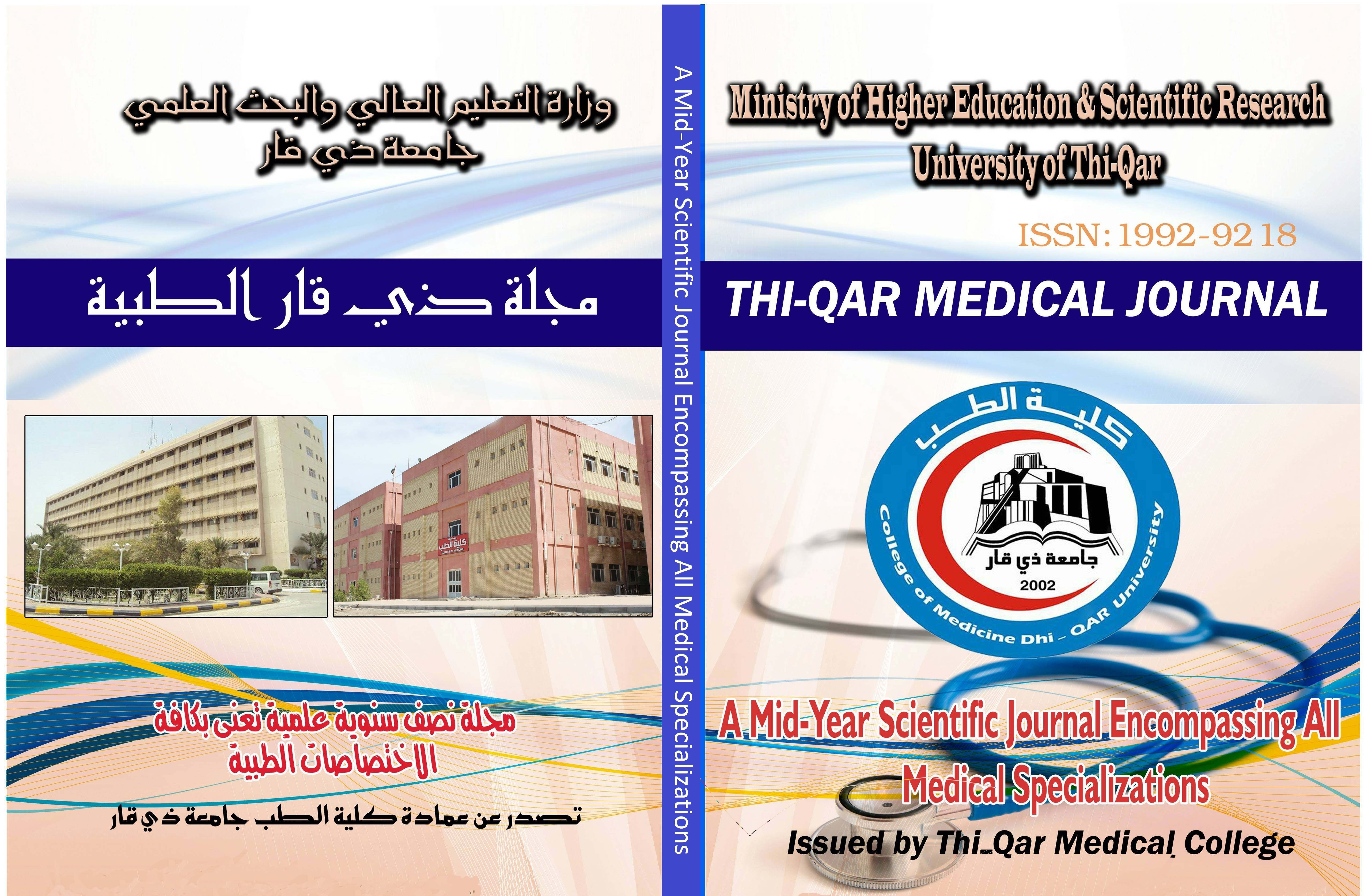Abstract
Background: Dacryocystorhinostomy is the surgical bypass of the lacrimal sac and duct for the treatment of
epiphora. Endonasal endoscopic dacryocystorhinostomy has been popularized as a minimally invasive
technique.
Objective: the study aims to highlight the endonasal endoscopic DCR
without stenting and to evaluate the results of the surgical procedure.
Patients and Method: This was a prospective study of 18 patients referred from the ophthalmology
department for dacryocystorhinostomy after having been diagnosed as distal obstruction of nasolacrimal
duct or sac. Data were collected through full history from the patients and clinical examination. Endoscopic
dacryocystorhinostomy was performed without stent between January 2019 and January 2020 in Al
Imamain Al Kadhimain Medical City and Al Qimma private hospital.
Results: The mean age was 34.83 years , range (12-53) years , 15 females(83.33%) and 3 males (16.67%) ,
10 right eyes(55.56%) and 8 left eyes(44.44%) . All patients presented with epiphora, 17 of them (94.44%)
presented with medial canthal discharge and 14 of them(77.78%) had medial canthal swelling with a mean
duration of symptoms of 8.72 (5.5-14) months. Four patients were sent for a CT scan. Five patients(27.78%)
had a septoplasty, two patients(11.11%) had conchoplasty to improve surgical access. The mean duration of
surgery was 39.99 minutes, no intraoperative complications, one patient(5.55%) developed granuloma at the
rhinostoma after 4 weeks and two patients(11.11%) developed synechia between the neo-ostium and middle
turbinate after 3-6 weeks and one patient(5.55%) had a recurrence after 12 weeks. The success rate was
94.44%.
Conclusions: The endoscopic endonasal DCR is a successful surgery with low serious complications for
treatment of distal nasolacrimal drainage obstruction if adequate sac exposure and good marsupialization are
performed.
epiphora. Endonasal endoscopic dacryocystorhinostomy has been popularized as a minimally invasive
technique.
Objective: the study aims to highlight the endonasal endoscopic DCR
without stenting and to evaluate the results of the surgical procedure.
Patients and Method: This was a prospective study of 18 patients referred from the ophthalmology
department for dacryocystorhinostomy after having been diagnosed as distal obstruction of nasolacrimal
duct or sac. Data were collected through full history from the patients and clinical examination. Endoscopic
dacryocystorhinostomy was performed without stent between January 2019 and January 2020 in Al
Imamain Al Kadhimain Medical City and Al Qimma private hospital.
Results: The mean age was 34.83 years , range (12-53) years , 15 females(83.33%) and 3 males (16.67%) ,
10 right eyes(55.56%) and 8 left eyes(44.44%) . All patients presented with epiphora, 17 of them (94.44%)
presented with medial canthal discharge and 14 of them(77.78%) had medial canthal swelling with a mean
duration of symptoms of 8.72 (5.5-14) months. Four patients were sent for a CT scan. Five patients(27.78%)
had a septoplasty, two patients(11.11%) had conchoplasty to improve surgical access. The mean duration of
surgery was 39.99 minutes, no intraoperative complications, one patient(5.55%) developed granuloma at the
rhinostoma after 4 weeks and two patients(11.11%) developed synechia between the neo-ostium and middle
turbinate after 3-6 weeks and one patient(5.55%) had a recurrence after 12 weeks. The success rate was
94.44%.
Conclusions: The endoscopic endonasal DCR is a successful surgery with low serious complications for
treatment of distal nasolacrimal drainage obstruction if adequate sac exposure and good marsupialization are
performed.
Keywords
(DCR)
a condition in which tears accumulate to the point that they drain down the face (1)
DCR
endoscopic
epiphora Dacryocystorhinostomy
is the surgical bypass of the lacrimal sac and duct for the treatment of epiphora
